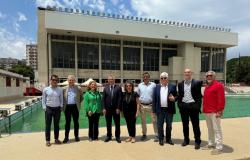A detailed analysis of the city of Agrigento, exploring the evolution of its urban and rural landscape, the urban planning choices and the role of the General Town Plan. The importance of the agricultural landscape and the Valley of the Temples in the context of sustainable urban development is discussed.
The historical and scientific framework of the landscape
Agrigento, a city rich in history and culture, stands out for its unique landscape which integrates natural and archaeological elements of inestimable value.
This article explores the evolution of the Agrigento landscape, focusing on the urban dynamics and planning tools that have influenced the city and its territory.
The analysis starts from ancient Akragas, passes through medieval Girgenti, up to current Agrigento, highlighting the challenges and opportunities linked to the conservation and enhancement of the landscape.
The historical and scientific framework of the landscape
The Agrigento landscape is the result of a complex interaction between historical, social and cultural facts.
Two main currents of thought have influenced the perception of the landscape in Italy: a scientific one, linked to the natural sciences, and an aesthetic one, focused on visual perception.
Studies such as those by Gambi, Sereni and Turri have contributed to outlining a vision of the landscape as an inseparable entity, where the social and landscape dimensions are closely connected.
Agrigento: from the Greek foundation to the contemporary landscape
Agrigento, known in ancient times as Akragas, was founded by the Greeks and is distinguished by its Valley of the Temples, an archaeological site of global importance.
However, disorderly urban development and illegal construction have often compromised the integrity of the landscape.
Despite this, the agricultural and coastal landscape remains a fundamental component of the local identity. The city has experienced several transformations, from the destruction of the Second World War to the uncontrolled urban growth of the 1950s and 1960s, which led to a fragmentation of the territory.
The choices of the General Town Plan of Agrigento
The General Regulatory Plan (PRG) of Agrigento represents an attempt to reorganize and enhance the territory, with the aim of reducing land consumption and promoting landscape protection.
The PRG seeks to connect the various urban fragments and integrate green spaces, proposing a model of sustainable development.
However, concrete choices often do not reflect declared intentions, leading to further consumption of agricultural land and interventions that do not always enhance the landscape.
The Park Plan: objectives and challenges
The Archaeological and Landscape Park of the Valley of the Temples is a central element in the planning of the Agrigento area.
The Park Plan aims to preserve and enhance archaeological and landscape resources, promoting sustainable use of the territory. However, the implementation of the Plan’s proposals encounters various resistance, both at municipal level and from the local community.
The main challenges concern the management of tourist traffic, the conservation of agricultural areas and the promotion of economic activities compatible with landscape protection.
Concluding considerations: future prospects for Agrigento
Agrigento has the opportunity to transform its urban and rural landscape into a model of sustainable development. The key to the future lies in the ability to combine the protection of cultural and environmental heritage with the promotion of a local economy based on local resources.
The PRG and the Park Plan must be effective tools to guide this transformation, encouraging participatory and shared planning that enhances the specificities of the Agrigento landscape and strengthens its identity.





